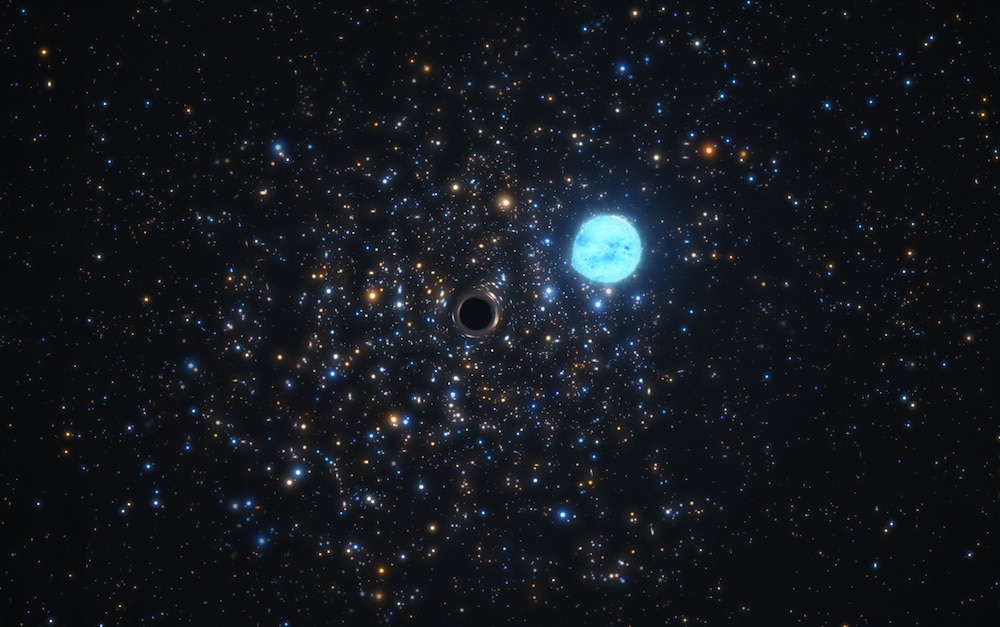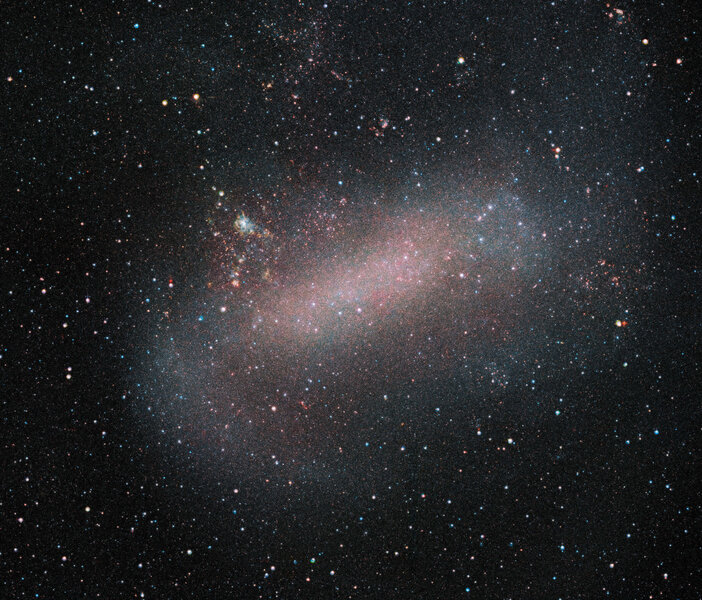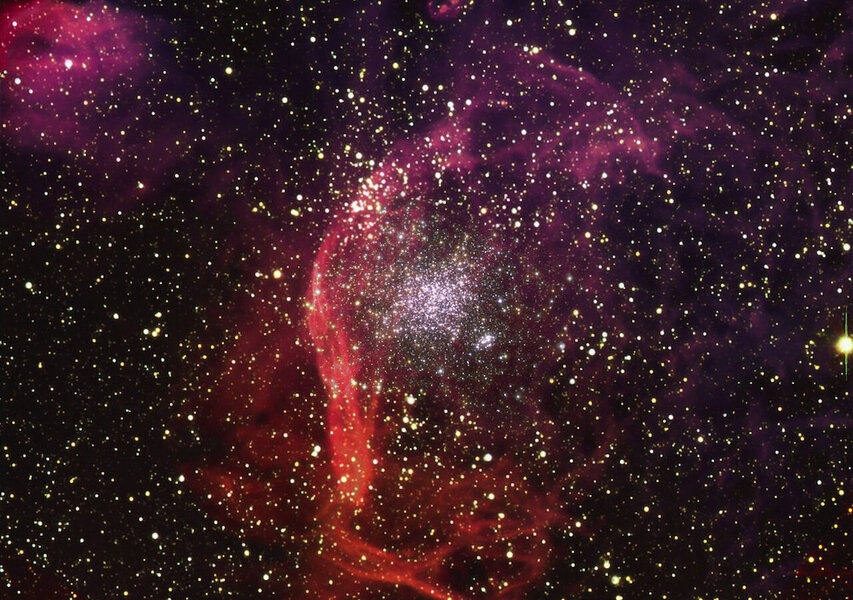Create a free profile to get unlimited access to exclusive videos, sweepstakes, and more!
Black hole in Milky Way satellite galaxy found as it tosses around its companion
It has a mass equivalent to 11.1 Suns.

Astronomers have found compelling evidence of a black hole in a cluster of stars that's in a satellite galaxy of the Milky Way, the first time one has been found on a cluster this young. It's an important discovery, as it will help astronomers understand what young black holes are like and how they change over time.
The cluster is called NGC 1850, and it's a beauty: It's about 156,000 light years away in the Large Magellanic Cloud, a dwarf almost-spiral galaxy that orbits the Milky Way, our home galaxy. The cluster is young, less than 100 million years old — that's a baby to an astronomer — and has hundreds of thousands of stars in it.
They used a camera on the Very Large Telescope in Chile called MUSE (Multi Unit Spectroscopic Explorer) which can take spectra of thousands of stars at the same time (many spectrographs can only do one or maybe a handful of stars at the same time). A spectrum is the light from a source broken up into hundreds or thousands of individual wavelengths (colors). This can tell you a lot about the object, like what it's composed of, how rapidly it's spinning, and crucially here how rapidly it's moving toward or away from Earth — its motion can be measured using the Doppler shift.
They found a very unusual spectrum from one star near the cluster's center, just 15 light years out. Although only one star is seen, it's spectrum shows a clear sign of it orbiting around another object every 5 days, and hauling mass: The variation in the star's speed exceeds 140 kilometers per second (500,000 km/hour)* at some times, which is incredibly fast. The star is about 5 times the mass of the Sun, yet some invisible companion is tossing it around at a ridiculous velocity.
Only one thing can stay hidden yet exert so much gravitational force on a star: a black hole. But how massive a black hole?
That can be determined from the speed and mass of the star orbiting it. But there's an issue: it depends on the angle we see them orbit. The Doppler shift is maximized if we see the orbit edge-on, but if it's face on we don't see any shift at all. To get the true mass of the black hole, we need the angle of their orbit to us.
Happily, there's a special trick to do that in this case. The "normal" star is dying; it's starting to run out of the hydrogen fuel in its core it fuses into helium. When stars reach this stage they start to expand, and eventually become a red giant. This star isn't quite there yet, but it's getting bigger.
Normally it would expand as a sphere, but that black hole is nearby. The physics is a little complicated, but the star winds up forming a teardrop shape, with the narrow bit pointing toward the black hole. This distortion changes the brightness of the star as well, and it looks brighter and dimmer from different angles. Observations of this cluster have been made using OGLE (the Optical Gravitational Lensing Experiment), and the brightness of the star has been measured many times. The way it changes the brightness we see as it orbits around the black hole depends on the shape of the star and the angle of that orbit, so by using a little geometry that angle can be found.
In other words the orbital angle is crucial to getting the black hole mass, and they could determine that angle. So, doing the math, they find that the black hole is a respectable 11.1 times the mass of the Sun.
This is an important result! Masses of black holes can be hard to get. Sometimes if they're actively feeding on material their mass can be calculated by how hot the material gets before it falls in. But that's relatively rare; most black holes are quiet. Many are in binary star systems, but the true mass can be difficult to get if the angle of the orbit isn't known. On top of that, because the NGC 1850 cluster is so young we're seeing the black hole in the early stages of its "life." Normally we see them when they're much older, and they change over time (they grow in mass, they affect the star they orbit, their environment changes). This gives astronomers a good starting point to help them understand how these objects evolve.
Also in this case the star should be very slowly feeding material to the black hole as it expands. This material makes X-rays as it falls in, and looking at X-ray data they do get a marginal detection at that star's location. It's very weak, but the beauty again here is that with the mass of the black hole known it can help calibrate future measurements of actively feeding black holes.
I wrote just the other day about a pile of new binary black hole merger detections via gravitational waves. A lot of these detections are from more massive black holes, and it's not clear how they grow to those sizes. Again, having a firm mass measurement for this one in NGC 1850 will help astronomers better analyze the gravitational wave data.
All in all this is a pretty good haul of science from an object we can't even see! But tiny (the black hole is probably only about 65 km in diameter) doesn't mean weak. In this case, combined with its mass, this is the source of its power, and why we are able to detect it at all across intergalactic space.
* Correction: I originally wriote that the speed was 300 km/sec due to a misunderstanding on my part.





























